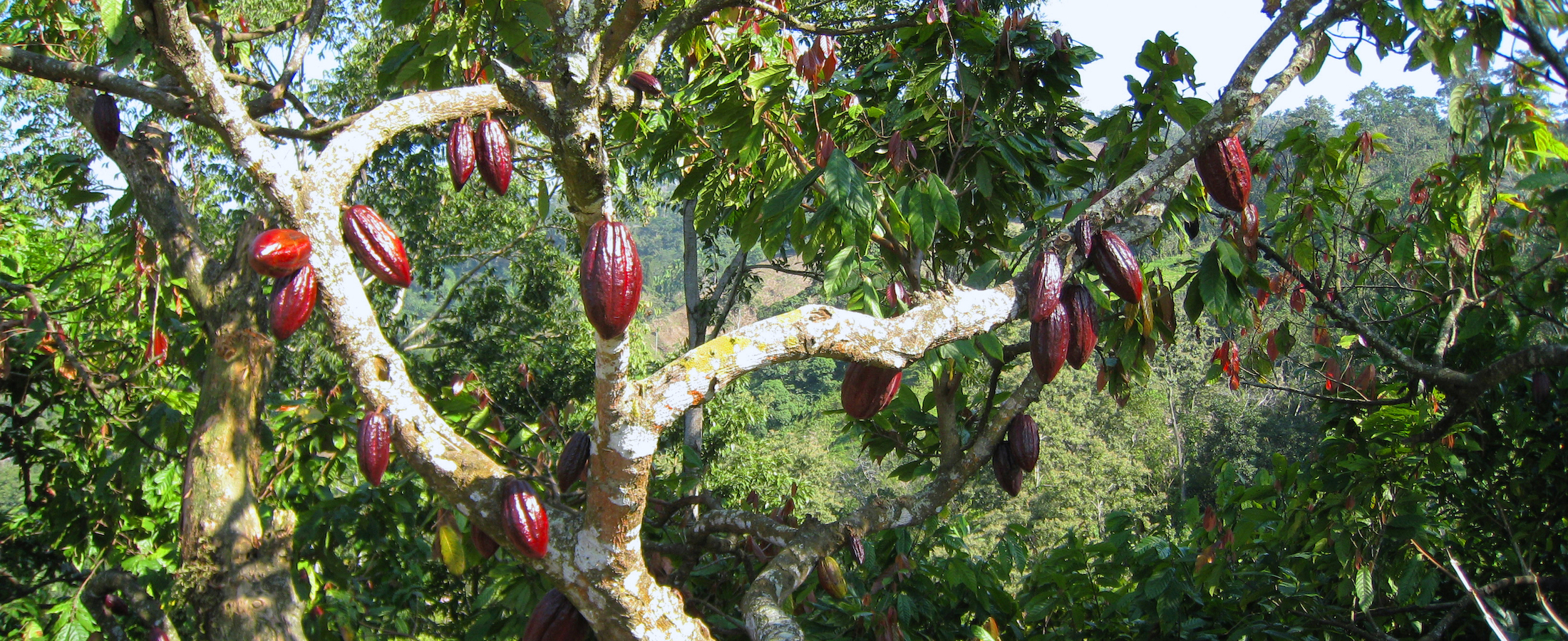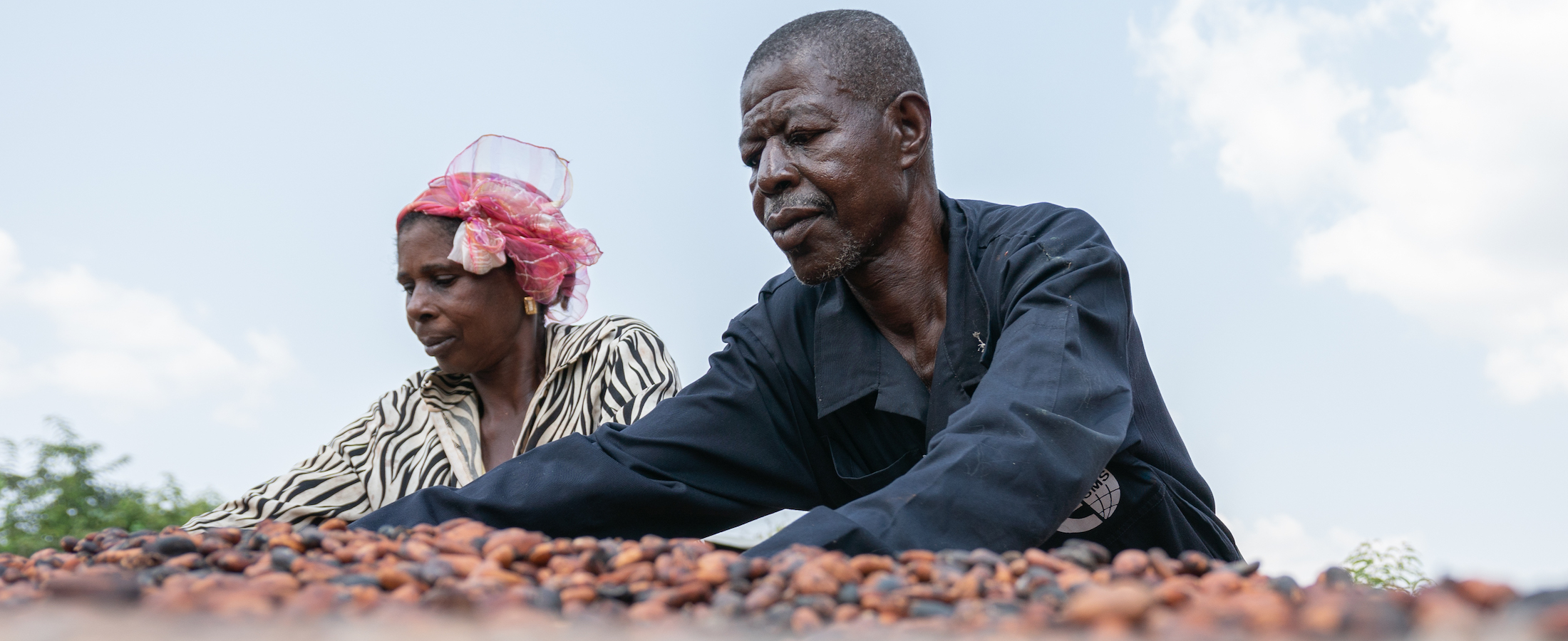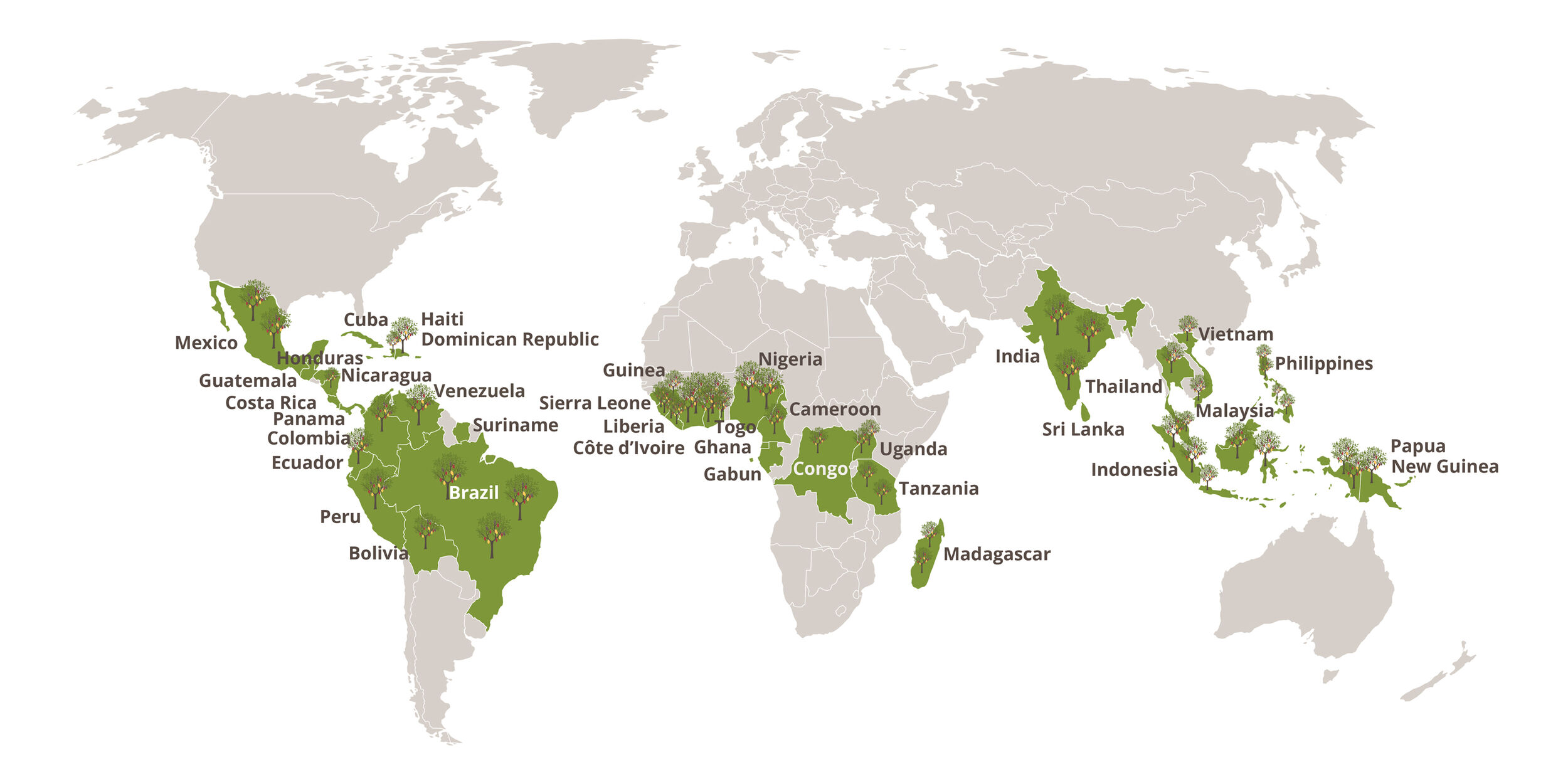Cocoa: livelihood and consumer good
Cocoa is the key ingredient in chocolate. Cocoa cultivation provides a livelihood for 5-6 million farmers in developing countries, almost all of them are smallholder farmers. Cocoa farmers worldwide produce about five million tons of cocoa beans per year. Switzerland is not only home to many chocolate brands, but also to other globally active companies that play an important role in the global cocoa value chain.
Chocolate is made from the fermented and dried beans of the cocoa tree Theobroma Cacao. The small and evergreen cocoa tree is native to the tropical rainforests of Central and South America. Today, cocoa is grown in a narrow belt around the equator in Africa, Asia, Latin America, and Oceania. The world’s two largest cocoa growing countries - Côte d'Ivoire and Ghana – make up more than half of the global cocoa production. Most cocoa is produced by millions of smallholder farmers on farms of five hectares or less.
In terms of taste, the cocoa market distinguishes between bulk and fine flavor cocoa. Bulk cocoa is mainly produced from the Forastero variety in West Africa, Brazil, and Asia, making up around 95 % of the global cocoa harvest. The Forastero variety is more resistant to diseases than the Criollo and Trinitario varieties, which generate highly aromatic fine flavor cocoa with low acid levels. Fine flavor cocoa is mostly grown in Ecuador and Trinidad and Tobago.

Cocoa pods grow directly from the trunk or old branches of the cocoa tree and take five to six months to ripen after pollination. Once matured, the pods are harvested by hand during two peak harvesting seasons each year. Right after harvest, the beans are manually removed from the pods and are fermented and dried to develop the typical chocolate flavor. These processing steps are crucial for a good quality cocoa.


